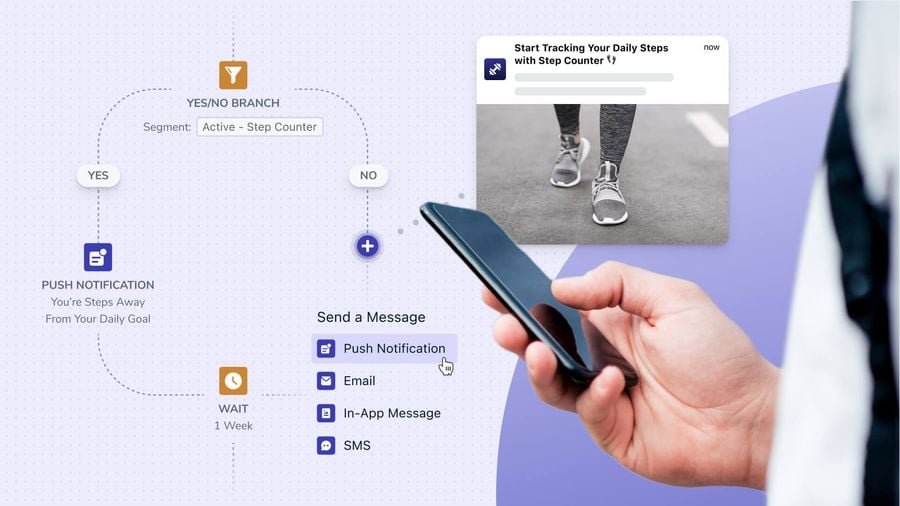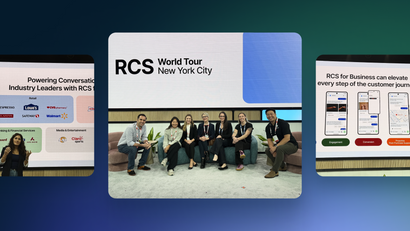Activation is a concept that must be uniquely defined and differentiated for every app-based business. User activation is a phase of the customer journey that lies between acquisition, onboarding, and monetization. Your business must effectively “activate” your users to hook them on your platform and ultimately achieve long-term retention and monetization goals.
What is user activation?
Unfortunately, activation is a stage of the mobile app customer journey that is often deprioritized or ignored in favor of more overarching goals such as acquisition and direct conversions.
So what exactly is activation? User activation is a user taking an action or series of actions on your platform that indicates they have started deriving a benefit from your product.
Common activation actions can include a user expressing their news preference categories on your media app, entering their credit card details in your food delivery platform, or initiating a free trial.
Why do you need activation?
Defining and optimizing your app experience around activation is critical because it translates to reducing your churn rate and increasing retention. In the competitive mobile app industry, users can easily become distracted and abandon your product if they’re not deriving value from the experience. It’s clear why your app needs to prioritize activation when you understand it as a moment where this value exchange takes place.
Nailing user activation and improving your UX around this metric will help you minimize the frustration of a high churn rate. Getting users to “stick” to your platform is increasingly difficult, as the following stats corroborate.
- In 2021, over 435,000 apps were downloaded per minute
- Acquiring a user can be 5X more expensive than retaining an existing customer
- One in five users will churn after first downloading your app
What is a user activation rate?
Activation rate Is the Key Performance Indicator that measures activation and indicates the number of users who have taken steps to become “activated” on your platform over your total number of users.
Your activation rate will depend on the milestones you outline within your user journey.
(Activation Rate)= (# of Users Who’ve Taken Activation Action)/(Total # of Users)
How can you re-engage users who have abandoned your app?
As you map your customer journey, you should benchmark times when users typically abandon your app. Re-engaging users through onboarding until they are activated is critical.
Getting users to and beyond activation will be core to your success as activation is the moment in which users become hooked or invested in your app experience or product. After your users begin experiencing a tangible benefit from your company, they are more likely to re-engage with your platform to continue being rewarded.
Persistent and tactical re-engagement is critical in the activation phase when considering the following:
- In 2019, only 32 percent of users returned to an app 11 times or more.
- Retention rates tend to drop around the 7 and 30-day marks.
- The average App User Churn Over 3 Months is 72.76 percent.
- Reducing churn by only 5 percent can increase profitability by 75 percent.
5 Ways to Drive Mobile App User App Activation
Now that we’ve outlined the concept of activation, here are several ways you can improve your activation rate.
1) Define Activation
The first step you’ll need to take in order to optimize your activation strategy is to define at what point a user becomes “activated.” Think about the precise times when a customer starts deriving benefits from your product. In order to understand what action to pinpoint as activation, consider your core offering and what features, steps, or experiences a user must have completed in order to start filling a need with your product or service.
2) Understand Activation in the Mobile App Journey
The user journey can be formally broken down into several phases, of which activation is an intermediate step. You should clearly define every stage of your user journey in order to see activation’s role in this incremental progression.
Some mobile app marketers use the Pirate Funnel to frame the mobile app customer lifecycle.
The Pirate Funnel is a popular acronym defined by Dave McClure. The AAARRR model defines the stages typically involved in app adoption, from awareness to eventual monetization. The acronym stands for Awareness, Acquisition, Activation, Retention, Revenue, and Referral. Let’s get into what each phase entails.
Awareness— The awareness phase is constituted by the discovery of your app. You are likely spurring awareness to your offering through tactics such as advertising channels, app store optimization, or ASO, and SEO, or search engine optimization efforts.
Acquisition— This phase of the mobile app journey is defined as when users download your app.
Activation— Activation occurs after acquisition and onboarding based on criteria unique to your app model.
Retention— The retention phase refers to users returning to your app— after one day, one week, thirty, and ninety days, for instance.
Referral— This phase refers to users recommending your app to others, thus restarting the cycle by raising awareness.
3) Know How Psychology Drives Activation
Activation can be tied to fundamental principles in psychological marketing. Consider reciprocity, for instance. Reciprocity is a concept defined by marketing psychologist Robert Cialdini as the idea that by giving your customers something of value, whether it’s a coupon to your online store, a free skin in your gaming app, or a downloadable asset from your website, they will be more likely to give back in return. Companies should understand the reciprocity principle both in defining their activation moment and in better optimizing this moment to be “sticky.”
4) Leverage User Data
In order to streamline your UX for activation, you’ll want to use your data and analytics tools to understand the dynamics of how users move through your funnel.
How long does the average user take to complete onboarding? How much time do they spend on each screen? Where are they falling off in their experience? With valuable integrations, you can better see into the steps of your user journey and pivot your activation strategy accordingly.
Let’s say your activation milestone is a user completing signup for your crypto app, at which point they receive a link to start trading in their email inbox.
However, your data shows that users are churning after the first two steps of your onboarding process, at which point you’re asking users to provide twenty fields’ worth of personal information including their dog’s maiden name. Your integrated data stack tells you that over fifty percent of your users are churning at this onboarding step, right before activation. You can solve this leaky bucket issue by simplifying step two of onboarding and requiring less fields of personal information.
5) Strengthen Your Onboarding Process
In order to more efficiently showcase the value of your app, you’ll want to ensure that your onboarding process is intuitive and straightforward. To increase the chances that a user makes it past onboarding and onto activation, improve your onboarding process with messaging flows that can be function-oriented, benefits-oriented onboarding, or progressive. You can implement these flows via one or multiple messaging channels, such as push notifications, SMS, web push notifications, or in-app messages.
Your onboarding process feeds directly into your activation goals, because a user must first get their bearings on your app’s functionality before they can be considered formally “activated.”
Leverage In-App Messages
You can streamline your user experience from onboarding to activation using features that popular marketing automation providers offer such as in-app messages, which provide a no-code way for you to capture a user’s attention with several screens of customizable content.
Customer Spotlight: Rapchat Activates New Creators With OneSignal Messaging
Our client Rapchat improves their activation rate with the OneSignal/RevenueCat integration.
Rapchat must first onboard users to their platform to start creating beats. This activation milestone contributes to their ultimate subscription retention goal. but They’ve defined their activation moment based on churn data they’ve collected. They identified that two to three days after acquisition, users tend to abandon their platform. This is where they implement messaging to activate creators.
According to Miller, moving input metrics like creator activation rate through targeted messaging campaigns helps boost high-level metrics like total subscribers and revenue.
"In addition to a great product onboarding experience, we rely on messaging plus notifications to help guide our users to find the value they want in our product," said Miller.
Get Started for Free



